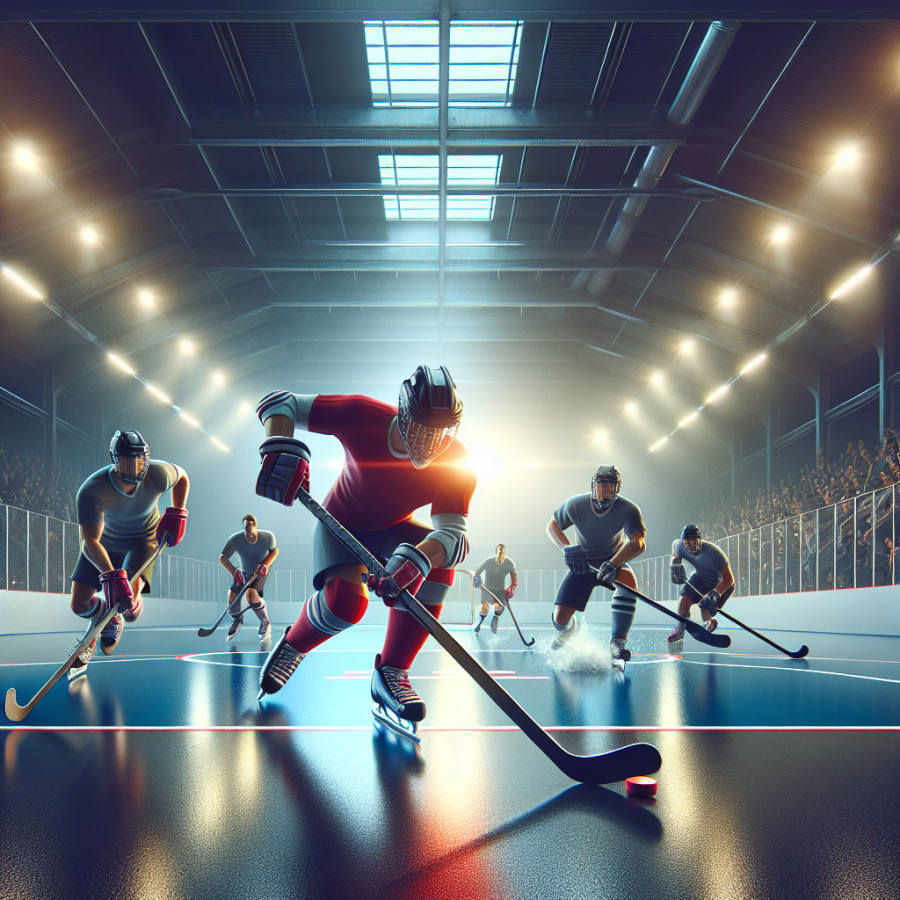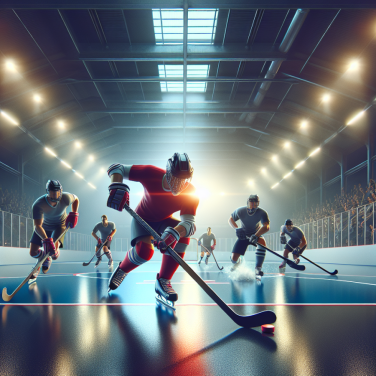Equipment Essentials: Choosing the Right Gear for Your Indoor Hockey Adventure
Floor hockey is a dynamic and accessible indoor stick sport that offers players of all ages the chance to engage in the excitement of hockey without the need for ice. Whether you play in a gym, a community center, or any other indoor setting, having the right equipment is crucial for both the enjoyment and safety of the game. In this section, we dive into the essentials that you will need to select the proper gear for your indoor hockey adventure.
Sticks are the centerpiece of floor hockey equipment. Unlike ice hockey sticks, floor hockey sticks are designed to perform on surfaces like wood, tile, or synthetic floors. When choosing a stick, consider the shaft material – options like wood, aluminum, or composite materials offer different weight, durability, and feel. The blade should be appropriate for the indoor surface, with enough flexibility to handle the ball well but maintaining enough rigidity for powerful shots.
Balls and pucks vary in floor hockey, with choices dependant on the playing surface and level of play. Soft foam balls are great for beginners and reduce the chance of injury or damage to the surroundings. For more advanced play, heavier balls or pucks designed for indoor use provide a more realistic puck feel, simulating the experience of ice hockey pucks.
Goalie gear is specialized to protect keepers from shots while allowing them the mobility they need to make saves. Pads, gloves, and masks designed specifically for floor hockey provide the necessary protection but are lighter and more breathable than ice hockey gear to suit the indoor environment.
Protective equipment for players is also important. While floor hockey doesn't usually involve as much contact as ice hockey, gear like shin guards, gloves, and even lightweight helmets can prevent injuries from stick checks, flying balls or pucks, and accidental collisions.
Footwear should offer excellent traction to avoid slips and falls on the playing surface. Many players opt for indoor sports shoes with non-marking soles that provide stability and support during quick directional changes and sprints.
When selecting gear, always consider the level of play you will be engaging in and the rules of the league or organization you are playing with, as they may have specific requirements or restrictions on the types of equipment allowed.
Investing in the right gear will not only ensure you can enjoy the thrills of floor hockey in comfort and safety but also enable you to perform at your best. With your equipment in check, you're ready to embrace the excitement of indoor hockey and all the fun and challenges it offers.
Read also:
Slippery Goals: The Thrilling World of Ice Football
Mastering the Basics: An Introduction to Floor Hockey Rules and Techniques
Floor hockey is a thrilling indoor sport that brings the energy and strategy of ice hockey into a gymnasium setting. This dynamic game is played with sticks and a puck or ball, with the objective of scoring goals against an opposing team. To participate in floor hockey successfully, it is essential for players to understand the fundamental rules and to master basic techniques.
At its core, floor hockey follows a set of standard rules that aim to provide a fair and enjoyable game environment. The number of players on the floor at any given time can vary depending on the specific game format but traditionally includes six players per team: three forwards, two defensemen, and a goalie. Substitutions are allowed, and players can rotate in and out of the game between plays, similar to ice hockey.
One of the basic rules of floor hockey concerns the playing of the puck or ball. Only the blade of the stick is allowed to touch the playing implement, with hand-passes being permitted only within the defensive zone. Players are also restricted from playing the ball above their waist with their stick, ensuring safety and a level playing field for competitors of all heights.
High-sticking, where a player raises their stick above waist level, is strictly prohibited due to safety reasons. This rule is crucial to avoid injuries, as high-speed sticks can pose a serious risk to players. Body checking and other forms of aggressive physical contact are also typically disallowed in floor hockey; instead, the game emphasizes stickhandling skills, speed, and strategy.
A basic technique that is vital to floor hockey is stickhandling, which allows players to control the puck or ball and navigate through opponents. Good stickhandling requires players to keep their heads up to maintain awareness of their surroundings while handling the puck with quick and agile movements of their stick.
Another fundamental skill is passing. Being able to accurately pass to a teammate allows teams to move the puck swiftly across the playing area, outmaneuvering the opposition. Effective passing can be the key to opening up scoring opportunities and is a staple of successful floor hockey gameplay.
Shooting is the technique used to score goals, and players must be proficient in various types of shots, such as wrist shots, slap shots, and snap shots. Each type of shot serves a different purpose and can be used in different game scenarios. Wrist shots, for example, provide accuracy for shooting in tight spaces, while slap shots generate power and are useful for long-range attempts.




